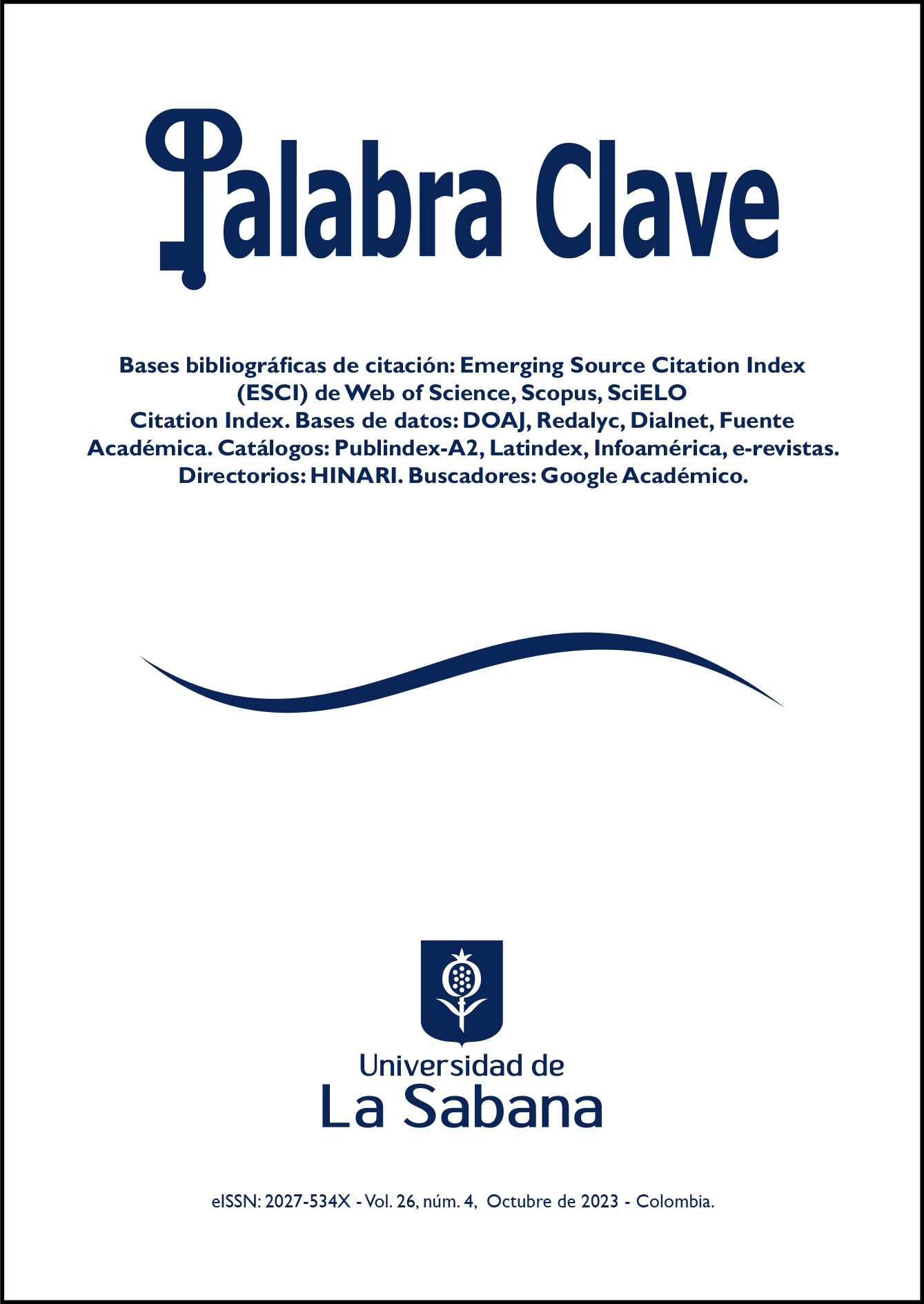Audiovisual Productions in Vertical Format: The Snap Originals Case. Fiction Consumption at 9:16
DOI:
https://doi.org/10.5294/pacla.2023.26.4.6Keywords:
Cinema, Internet, social media, Snapchat, vertical videoAbstract
The audiovisual industry has evolved rapidly due to the proliferation of devices, the democratization of the Internet, and the wide range of audiovisual products for all audiences. Recently, the use of cell phones and the appearance of social media such as Instagram and TikTok have caused videos to be frequently viewed in vertical format, normalizing and standardizing their consumption. Since they are commonly used for commercial and advertising purposes, works of fiction in vertical format have emerged. Regardless of length, technical characteristics, production design, and commercial exploitation, this trend is beginning to establish itself in the audiovisual market. This study analyzes how fiction productions adapt to the vertical format based on the audiovisual line drawn by Snap Originals productions. The research aims to answer questions such as the definition of Snap Originals as fiction productions in vertical format and define the narrative structure and audiovisual language used in this content, as well as their main characteristics.
Downloads
References
Bekmambetov, T. (2019). Dead of Night [Snap Originals]. Bazelevs & Hooked.
Canella, G. (2018). Video goes vertical: local news videographers discuss the problems and potential of vertical video. Electronic News, 12(2), 75-93. https://doi.org/10.1177/1931243117705417
Cortés Quesada, J. A., Barceló Ugarte, T. y Fuentes Cortina, G. (2022). Estudio sobre el consumo audiovisual de la Generación Z en España. Fonseca, Journal of Communication, 24, 19-32. https://revistas.usal.es/cuatro/index.php/2172-9077/article/view/28216
Francisco Lens, N. y Rodríguez Vázquez, A.-I. (2020). La innovación de la televisión pública europea en la oferta audiovisual digital: nuevas plataformas para la Generación Z. Revista de La Asociación Española de Investigación de La Comunicación, 7(13), 185-212. https://dialnet.unirioja.es/servlet/articulo?codigo=7268876
Gutiérrez Lozano, J. F. y Cuartero, A. (2020). El auge de Twitch: nuevas ofertas audiovisuales y cambios del consumo televisivo entre la audiencia juvenil. Ámbitos, Revista Internacional de Comunicación, 50 (otoño), 159-175. https://doi.org/10.12795/Ambitos.2020.i50.11
Helmi, S. (2018). The Dead Girls Detective Agency [Snap Originals]. Indigo Development & Entertainment Arts, Insurrection Media, Keshet Studios. https://shortyawards.com/12th/the-dead-girls-detective-agency-2
Hernández Pérez, J. F. y Martínez Díaz, M. Á. (2017). Nuevos modelos de consumo audiovisual: los efectos del binge-watching sobre los jóvenes universitarios. adComunica. Revista Científica de Estrategias, Tendencias e Innovación en Comunicación, 13, 201-221. https://doi.org/10.6035/2174-0992.2017.13.11
Karlsson, J. y Larsson, M. (2016). Adapting infinite-scroll with the user experience in mind [Dissertation, Computer Sciences, Department of Computer and Information Science]. https://urn.kb.se/resolve?urn=urn:nbn:se:liu:diva-131462
Lehmann, H. (2021). Two sides [Snap Originals]. Whistle Studios. https://www.snapchat.com/p/fc79675d-dd94-4aa9-858b-0554dab75521/2578496382472192
Lipovetsky, G. y Serroy, J. (2009). La pantalla global: Cultura mediática y cine en la era hipermoderna. Anagrama.
Llorca-Abad, G. (2015). Los contenidos audiovisuales transmediáticos ante los nuevos tipos de usuario. Obra Digital, 8, 137-154. https://www.researchgate.net/publication/280238819_Los_contenidos_audiovisuales_transmediaticos_ante_los_nuevos_tipos_de_usuario
Martínez-Costa, M. P., Serrano-Puche, J., Portilla, I. y Sánchez-Blanco, C. (2019). La interacción de los jóvenes adultos con las noticias y la publicidad online. Comunicar, 59(27), 19-28. https://doi.org/10.3916/C59-2019-02
Masip, P. y Caballero, C. y Suau, J. (2021). News consumption and Covid-19: Social perception. European Public y Social Innovation Review, 6(1), 29-41. https://doi.org/10.31637/epsir.21-1.3
McLuhan, M. y Nevitt, B. (1972). Take today. An executive as a dropout. Harcourt College.
Navarro-Güere, H. (2023). El vídeo en formato vertical. Una revisión de la literatura en comunicación. Revista Mediterránea de Comunicación, 14(1), 69-81. https://doi.org/10.14198/MEDCOM.23028
Navarro Robles, M. y Vázquez Barrio, T. (2020). El consumo audiovisual de la Generación Z. El predominio del vídeo online sobre la televisión tradicional. Ámbitos. Revista Internacional de Comunicación, 50 (otoño), 10-30. https://dialnet.unirioja.es/servlet/articulo?codigo=7614842
Rivas Moreno, M. Á. (2018). Cartografía del paisaje audiovisual a comienzos del siglo XXI. Disney, un imperio mediático global. Revista Eviterna, 3 (especial), 33-46. https://doi.org/10.24310/Eviternare.v0i0.8225
Ruiz Sánchez, J. C. (2018). El pensamiento crítico en la hipermodernidad: turbotemporalidad y pantallas. Ámbitos. Revista Internacional de Comunicación, 41, 77-87. https://doi.org/10.12795/Ambitos.2018.i41.05
Sanz Aznar, J. (2022). El marketing del neuromarketing en la industria cinematográfica. Revista Comunicación, 20(1), 25-43 https://doi.org/10.12795/Comunicacion.2022.v20.i01.02
Schaubach, M. (dir.) (2021). The Me and You Show [Snap Originals]. Big Breakfast. https://www.snapchat.com/p/1f9c7027-6b1f-451a-8c16-fab23f11dd39/2407083476883456
Published
How to Cite
Issue
Section
License
Copyright (c) 2024 Andrés Rozados Lorenzo, Sara Calvete Lorenzo, Rocío del Pilar Sosa-Fernández

This work is licensed under a Creative Commons Attribution 4.0 International License.
1. Proposed Policy for Journals That Offer Open Access
Authors who publish with this journal agree to the following terms:
- Authors retain copyright and grant the journal right of first publication with the work simultaneously licensed under a Creative Commons Attribution License that allows others to share the work with an acknowledgement of the work's authorship and initial publication in this journal.









